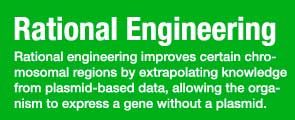
We found an E. coli mutant of MG1655 in scientific literature from the University of Barcelona (Strain E-15 EG3), that is able to grow solely on ethylene glycol, one of the two products created during PET degradation [1]. The scientists in Barcelona created these mutants through directed evolution, a process that selects for the most fit in a group. Then, the scientists performed ethyl methylsulfonate (EMS) on the cultures, plated the cells on media with ethylene glycol, and restreaked the colonies several times. From this, they learned that the main contributors in the degradation were propanediol oxidoreductase and glycolaldehyde dehydrogenase. These two enzymes are expressed at low levels in MG1655 but not at all in DH5α. We want to overexpress these enzymes in MG1655 through directed strain engineering. Rather than take the enzymes from Strain E-15 EG3, we want to clone the enzymes from the MG1655 and be able to control them ourselves, also known as rational strain engineering.
 "
"





















